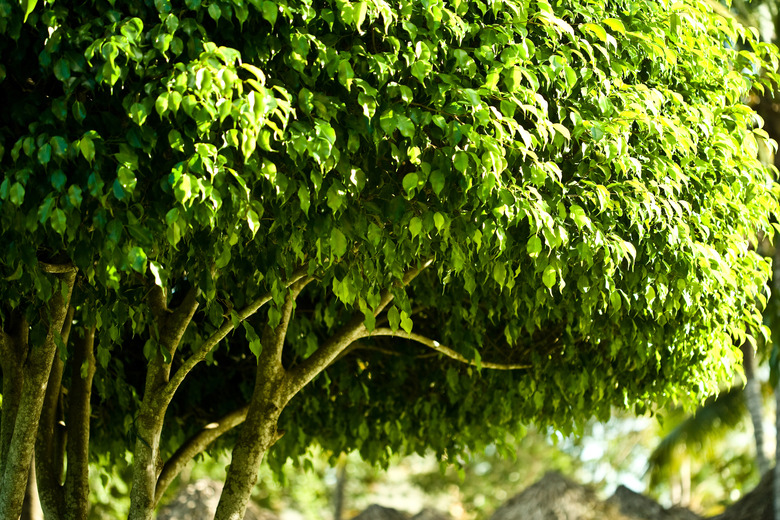The Life Cycle Of A Sycamore Fig Tree
It soars 55 feet into the air; the shade from its 20-foot canopy protects a teeming collection of insects, reptiles, and rodents. The sycamore fig tree is an ancient species and a prodigious bearer. But despite its lusty appearance and behavior, it is only through an odd relationship with a tiny insect that the sycamore fig tree thrives at all.
Step 1
A member of the Mulberry family, the sycamore fig is native to southern Africa and the southern Arabian Peninsula. It was cultivated in Israel and Egypt where it is coveted for its shade, wood and fruit. One of the oldest known tree species, reference to the sycamore fig is made in the Bible, and specimen trees exist in the tropics that date into the thousands of years. According to the USDA plant guide, they are neither native to nor actively cultivated in the U.S.
Propagation
Step 1
The life of a sycamore fig tree begins from a seed dropped in the nutrient-rich soil near water, or the mossy undergrowth in mixed woodlands, by one of the animals who eat the figs. A mature tree will produce up to a ton of figs four times per year, giving the sycamore fig the distinction of feeding more animal species in Africa than any other tree. They are evergreen with a fluted trunk and begin bearing fruit between the ages of five and six.
Step 2
- A member of the Mulberry family, the sycamore fig is native to southern Africa and the southern Arabian Peninsula.
- According to the USDA plant guide, they are neither native to nor actively cultivated in the U.S.
- The life of a sycamore fig tree begins from a seed dropped in the nutrient-rich soil near water, or the mossy undergrowth in mixed woodlands, by one of the animals who eat the figs.
Pollination
Step 1
The buds produced by the sycamore fig cannot become fruit and seed until they are fertilized by a fig wasp. The tiny female wasps enter the fig cavity to lay eggs and pollinate the bud. Once the wasps have left the tree, the figs begin to ripen, providing seed to perpetuate the species in fruit to assist with propagation. The tree will repeat the process up to four times a year over its entire lifetime, starting new buds within weeks of dropping fruit.
Threats
Step 1
Man and drought are the only documented threats to the sycamore fig tree. They have a lifespan of 500 to 1,000 years. The fluted trunk helps them withstand assault by animals or severity of weather. An individual tree can live with or without bearing fruit, and the species is unaffected by bug or borer infestation.
Step 2
- The buds produced by the sycamore fig cannot become fruit and seed until they are fertilized by a fig wasp.
References
- PBS: The Queen of Trees
- New World Encyclopedia: Sycamore
- "Ancient Trees: Trees That Live for 1,000 Years"; Anna Lewington/Edward Parker; 2004
- U.S. Department of Resources: Plant Guide
